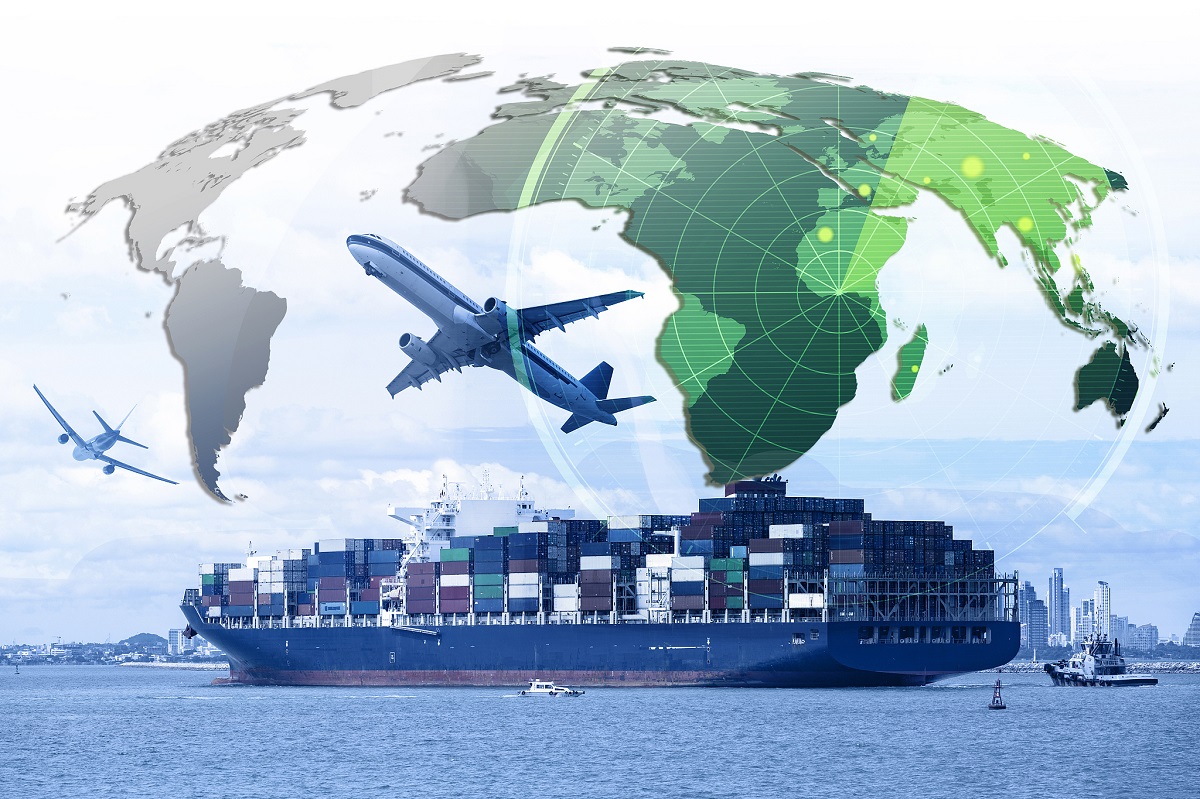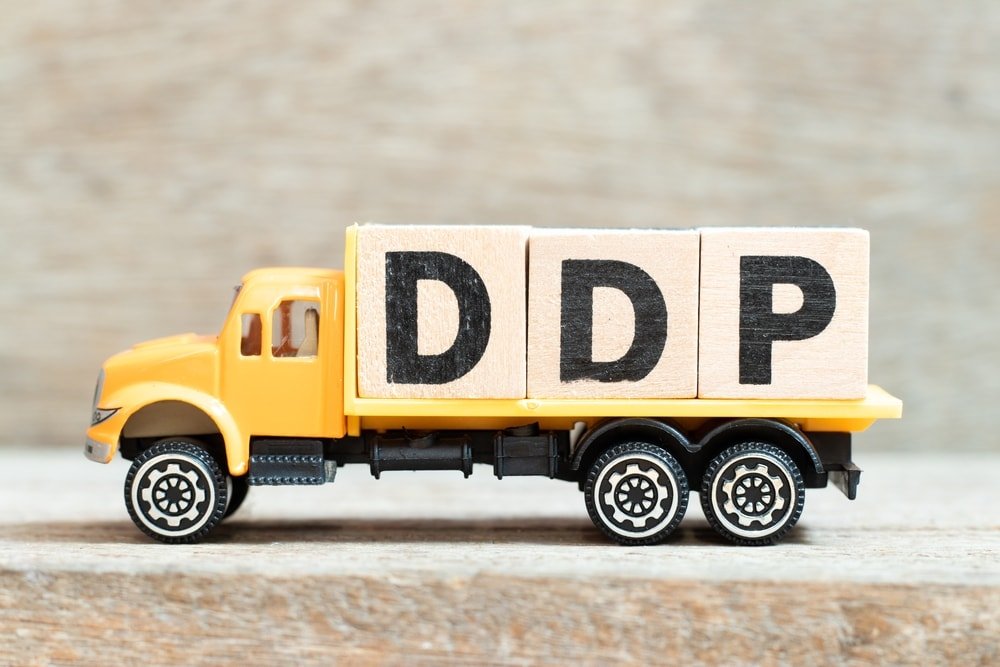The 11 common international trade logistics terms
Terms used in international shipping are often confusing because abbreviations and acronyms abound. You must deal with them in your import operations in international trade. These terms help clarify the respective responsibilities, costs and risks of sellers and buyers in transactions.
In this article, we introduce you to 11 of the most common shipping-related terms so that you are prepared to deal with these terms and have a clear understanding of them.
EXW (Ex Works)
EXW means that the seller delivers the goods to the buyer at its own factory, warehouse or designated location. After the delivery is completed, all subsequent costs and risks are borne by the buyer. This means that the seller’s obligations are limited to delivery at the location, and transportation, insurance, export customs clearance, etc. are all the responsibility of the buyer.
Suitable for situations where the buyer wants to have full control over the transportation process. Since the seller’s responsibility is less, EXW is usually used in transactions with high trust between the two parties, or when the buyer has its own logistics network.
The risk is minimal for the seller, but the buyer needs to bear all risks and costs in transportation and needs to have strong logistics operation capabilities.
FCA (Free Carrier)
FCA requires the seller to hand over the goods to the carrier designated by the buyer and deliver them at the place agreed by both parties. When the goods are handed over to the carrier, the risk is transferred from the seller to the buyer. The seller is responsible for export customs clearance, but the transportation costs and other costs at the destination are borne by the buyer.
Suitable for air and container shipping. The seller is responsible for export customs clearance and only needs to deliver the goods at the designated place, with relatively small responsibilities. The buyer needs to deal with the risks and costs after the carrier receives it.
For detailed information, please read: Understanding the FCA Incoterm: A Detailed Guide for International Trade
FAS (Free Alongside Ship)
Under FAS conditions, the seller delivers the goods to the loading port and places them alongside the ship, that is, the goods before loading are located at the dock or barge. The risks and costs of the goods from the side of the ship are borne by the buyer, and the buyer is responsible for loading and shipping costs.
Only applicable to sea transportation, suitable for transactions that require the transportation of bulk commodities (such as grain and ore). Suitable for sellers near the loading port, the seller only needs to deliver the goods to the side of the ship. The buyer is responsible for all costs after loading and transportation.
FOB (Free on Board)
Under FOB terms, the seller is responsible for loading the goods onto the designated vessel. After the goods are loaded, all costs and risks are transferred to the buyer. The seller is responsible for export customs clearance, and the buyer is responsible for paying the shipping costs and post-arrival costs.
Widely used in sea and inland waterway transportation, it is one of the most commonly used trade terms in international trade.
FOB allows the buyer to choose and control the ship, which is suitable for large-volume cargo transportation. The seller is only responsible for the loading process, and the buyer needs to bear the risks in transportation.
For detailed information, please read: Incoterm FOB: Definition, challenges and alternatives
CFR (Cost and Freight)
The seller is responsible for chartering or booking a ship, loading the goods on board and paying the freight to the destination port within the time limit of the port of shipment specified in the contract, and the delivery is completed, but the risk is transferred to the buyer from the time the goods are loaded on board. That is, the seller bears the freight, but the risk of the goods after loading is borne by the buyer.
Applicable to sea and inland waterway transportation, suitable for medium-volume or non-urgent cargo transportation.
Under the CFR terms, the seller bears all costs and risks before the goods are loaded on board, and the buyer bears all costs and risks after the goods are loaded on board.
CIF (Cost, Insurance and Freight)
The CIF terms require the seller to load the goods on board at the port of shipment, pay the freight to the destination port, and arrange cargo insurance for the buyer, and the delivery is completed. The seller must ensure that the cargo transportation insurance covers at least 110% of the value of the goods.
Suitable for sea and inland waterway transportation, especially for goods with higher transportation risks.
Under CIF terms, the seller is responsible for freight and insurance, but the buyer still needs to bear the costs after customs clearance at the port of destination. The buyer does not need to purchase insurance separately, but the coverage is usually limited.
CPT (Carriage Paid To)
CPT requires the seller to hand over the goods to the carrier and pay the transportation costs to the designated destination. However, the risk of loss or damage to the goods and any additional costs caused by various events are transferred to the buyer at the time of delivery
Suitable for any mode of transportation, especially container cargo transportation and land transportation.
CPT terms require the seller to pay the freight, but the risk is transferred to the buyer earlier, which is suitable for scenarios where both parties share freight and risks.
For detailed information, please read: Understanding the CPT Incoterm: A Detailed Guide for International Trade
CIP (Carriage and Insurance Paid To)
CIP requires freight and insurance to be paid to the designated destination. The seller pays the freight to transport the goods to the designated destination and arranges cargo insurance for the buyer until the goods are delivered to the buyer at the designated place.
Applicable to a variety of transportation methods, such as air, sea, and rail transportation. Similar to CIF, but more flexible.
The seller pays for insurance and the buyer bears the transportation risk, which helps reduce the buyer’s financial risk.
DPU (Delivered at Place Unloaded)
Under DPU, the seller is responsible for transporting the goods to the designated location and completing the unloading. The risks and costs at the destination are transferred to the buyer, who is responsible for customs clearance and destination costs.
Suitable for any mode of transportation, especially for scenarios where the seller needs to complete the unloading. The seller is responsible for unloading and bears the transportation risks, and the buyer is only responsible for customs clearance and costs at the destination.
DAP (Delivered at Place)
DAP requires the seller to transport the goods to the buyer’s designated location, but the buyer is responsible for customs clearance. The seller bears the transportation and destination risks, and the buyer bears the customs clearance and import costs.
Suitable for all modes of transportation, suitable for situations where the buyer has strong customs clearance capabilities. The seller bears the transportation risks, and the buyer needs to handle customs clearance. Suitable for scenarios where it is necessary to ensure full responsibility for the transportation process.
DDP (Delivered Duty Paid)
Under DDP conditions, the seller is responsible for customs clearance and payment of import taxes, and delivers the goods to the place designated by the buyer. The buyer only needs to accept the goods and does not need to bear the transportation and tariff costs.
Suitable for any mode of transportation, the seller bears all costs and responsibilities, and is suitable for scenarios where the buyer has no customs clearance capabilities. The seller bears the greatest responsibility, and the buyer only needs to receive the goods. Suitable for orders that require worry-free delivery.
For detailed information, please read:Presou DDP 8.0: Comprehensive One-Stop Solution for Shipping from China
The above are 11 terms commonly used in international trade. Learn and understand these terms through this article. Choosing the right terms for transactions helps ensure transaction security and improve the efficiency of logistics and payment.
 English
English 简体中文
简体中文 繁體中文
繁體中文 Afrikaans
Afrikaans አማርኛ
አማርኛ Español
Español العربية
العربية Français
Français Dansk
Dansk Български
Български Беларуская мова
Беларуская мова বাংলা
বাংলা Português
Português Русский
Русский Afsoomaali
Afsoomaali فارسی
فارسی Türkçe
Türkçe كوردی
كوردی Deutsch
Deutsch 日本語
日本語 ไทย
ไทย Tiếng Việt
Tiếng Việt Italiano
Italiano עִבְרִית
עִבְרִית 한국어
한국어 Română
Română Nederlands
Nederlands Bahasa Indonesia
Bahasa Indonesia Shona
Shona




